Contents
How to Strengthen Pelvic Floor Muscles? Follow these top 9 amazing exercises to prevent pelvic pain, develop strong pelvic floor muscles and stay healthy.
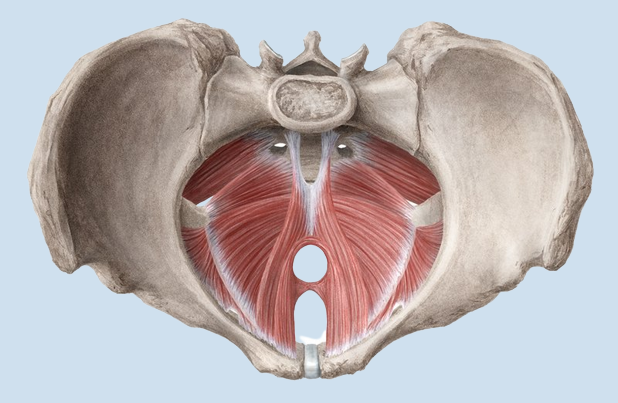
What Are The Pelvic Floor Muscles?
Pelvic floor muscles include muscles and connective tissues attached to the pelvis. Pelvic organs include the urethra, intestines, bladed, and rectum.
For females, the pelvic floor also consists of the uterus, cervix, and vagina. All the pelvic floor muscles are placed like a basket at the bottom of the pelvis in a female.
When your pelvic muscles are engaged or contracted, it lifts your head forward. It feels like you are stopping gas or urine from passing.
The pelvic floor muscles are critical for daily functions; hence you shouldn’t ignore the symptoms.
These pelvic floor muscles stabilize your hips while walking and standing. Pelvic floor muscles also play a critical role in sexual health.
Pregnancy, age, menopause, heavy lifting, prolonged sitting, or sexual abuse can weaken the pelvic floor muscles. Problems with pelvic floor muscles are very common.
How Do You Know That Your Pelvic Floor Muscles Are Weak?
Do you feel a little urine leak when you sneeze, cough, or laugh? If yes, you need pelvic floor muscle training. It is a very common symptom and can happen to anyone.
It is also about the uncomfortable feeling of being unable to control pee for longer.
To prevent such accidents, you must strengthen the pelvic floor muscles. It supports your bladder, uterus, and bowel movements.
It is treatable and can be overdone by specific strengthening exercises. You must include the exercises in your fitness routine to strengthen these muscles.
The exercises teach your muscles to contract and relax properly. You can get more powerful pelvic floor muscles with certain exercises and stretches, including yoga, Kegels, and breathing techniques.
For exercises, you need a yoga mat, yoga blocks, yoga bolster, and also a stability ball. Make sure you do these exercises regularly for quick results.

Click to Learn More About the Pelvic Floor Strong on the Official Website
Exercises To Strengthen Your Pelvic Floor Muscles
Pelvic floor muscles can be activated with simple exercises. With particular exercises, you can strengthen pelvic floor muscles.
It is beneficial for those having hypotonic pelvic floor muscles.
This means you have low-tone pelvic floor issues that need more power and endurance.
These 9 exercises help you to develop stronger pelvic floor muscles and stay healthy. With regular practice, you can avoid uncomfortable moments in your life.
1. Quick Flick Kegels
Experts say that Quick Flick Kegels help you to contract pelvic floor muscles quickly, which activates muscles faster. It puts a stop to leaking while coughing and sneezing.
To perform Quick Flick Kegels, follow the given steps
- Lie down on the floor with bend knees and feet flat.
- Exhale gently, and squeeze or draw your abdominal muscles around your urethra just like you are trying to stop gas or urine. Females can squeeze muscles around the vagina. You must pull your navel to your spine and quickly contract and release the pelvic floor muscles. Try to contract 1 second before releasing.
- Maintain steady breaths.
- Repeat these quick flicks 10 times per set and rest for 10 seconds.

2. Marches (Toe Taps)
Marches exercise is also known as Toe Taps. Marches increase your core stability and also improve pelvic floor muscle contractions.
To perform this exercise, follow the steps given below
- Lie on the floor with bent knees and pelvis in a neutral position.
- Inhale into your ribs and exhale through your mouth; try to compress your ribs naturally.
- Draw your pelvic floor muscles up and lock
- Slowly leave your one leg in a tabletop position and then slowly lower the leg to the starting position.
- Repeat the movement alternately. Your deep core must stay engaged during the exercise. Make sure you do not feel pain in your lower back.
- Repeat 10 -12 times in total with alternate legs.
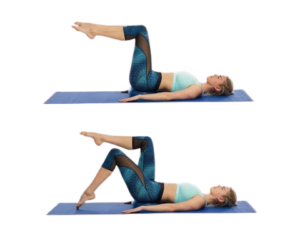
3. Happy Baby Pose
To strengthen pelvic floor muscles, Happy Baby Pose is a great addition. It is easy to perform and to be done regularly.
- It begins by lying on the floor with your knees bent.
- You must bring your knees towards your belly in a 90-degree position with the soles of your feet facing up.
- Grab and hold the inside or outside of your feet
- Open your knees until they are wider than your torso. You have to make sure your ankles are over your knees. Then bring your feet towards your armpits.
- Flex your heels and push your feet into your hands.
- Try to stay in this position for 10-12 breaths. You can even gently rock from side to side.
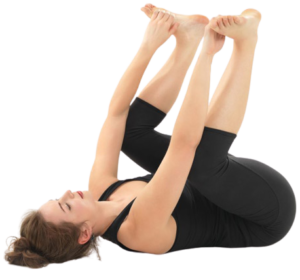
4. Bridge
The Bridge exercises strengthen your buttocks and work effectively for pelvic floor muscles.
To perform the exercise, follow these steps.
- Lie on your back and bend your knees. Keep your arms by the sides placed on the floor. Keep your feet flat on the floor about hip-width apart.
- Now contract your buttocks and pelvic floor muscles and lift the buttocks to the ground.
- Repeat this position 10 times per set for better results
Regular bridge exercises strengthen your pelvic floor muscles that help you to increase repetitions.
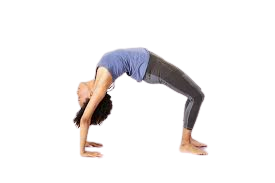
5. Squats
Many research studies indicate that squats strengthen your pelvic floor muscles and buttocks. It is very easy to perform squats and follow the given steps.
- You have to stand with hip-width apart and keep them flat on the floor.
- Now bend at the knees so that your buttocks move towards the floor as much as you can.
- You have to keep the back straight and tilt slightly forward. Your knees should be in line with your toes.
- While returning to the original standing position, focus on tightening the buttocks and pelvic floor.
- Repeat this exercise up to 10 times per set.
For strong pelvic floor muscles, narrow and shallow squats are effective. Wide-legged and deep squats are not useful for strengthening pelvic floor muscles.

6. Runner’s Lunge
Runner’s Lunge lengthens all the muscles in front of the back leg and deep muscles of the lower belly in the pelvic bowl.
The steps to perform Runner’s Lunge are:
- Step one foot forward so the knee is over the ankle, and let the back knee resting on the ground. With your two hands, try to frame your front foot.
- You can use two yoga blocks if you do not want to keep your hands on the ground. You can use a book pile if you do not have yoga blocks.
- Make sure that your front knee is directly over the ankle.
- Make sure hips shift forward to open the front of the back leg’s thigh. Hold the position for at least 15 to 20 seconds.

7. Hamstring Stretch
The hamstring stretch opens the back leg from the heel to the bottom of the butt. It helps you to stretch the pelvic floor muscles and stay fit.
- With yoga blocks on both sides, bend and keep your back leg hip directly over the knee.
- Your hips should be in line with the knees.
- Extend one leg straight in the front and flex your foot.
- Make sure that your spine is straight and doesn’t round.
- Press your hands on the yoga blocks to deepen the stretch and hold it for 15-20 seconds.

8. Supported Pigeon
This yoga pose stretches and lengthens your outer hip muscles surrounding the pelvis. For the pose, you must place a yoga bolster or a folded blanket perpendicular to the yoga mat.
- Lie down on your stomach with your head down on your crossed hands.
- Now place the front leg shin just in front of the bolster and back leg extending straight back from your hip.
- You must fold the front leg as much as possible to be comfortable.
- Hold this position for up to 10 to 12 breaths for better results.

9. Pelvic Tilt
Pelvic tilts increase hip mobility and strengthen the core and lower back muscles. It helps you eliminate lower back pain during pregnancy and post-pregnancy.
It becomes effective if you add a stability ball that reaches deeper into your abs and supports your pelvic floor muscles.
- You must sit straight on the stability ball with both feet on the floor.
- As you inhale, tilt your pelvic floor muscle forward.
- With an exhale, stick out your glutes with an arched back.
- For at least 20 times, tuck and untuck your pelvis.
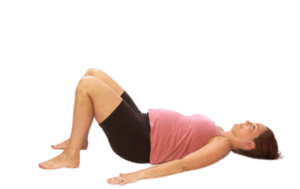
Conclusion
Daily exercising is great for your health. Adding pelvic floor exercises to your routine will strengthen your core muscles and overall health.
Ensure you follow the steps carefully and focus on achieving the right pose. While doing the exercises, your pelvic floor muscles must engage.
You should consult a pelvic floor muscle therapist if you have never performed these exercises. They inform you about these specific exercises and maintain the right position.
If still, you find that your pelvic floor muscles are weak, make sure you consult a doctor.
Click to Learn More About the Pelvic Floor Strong on the Official Website
